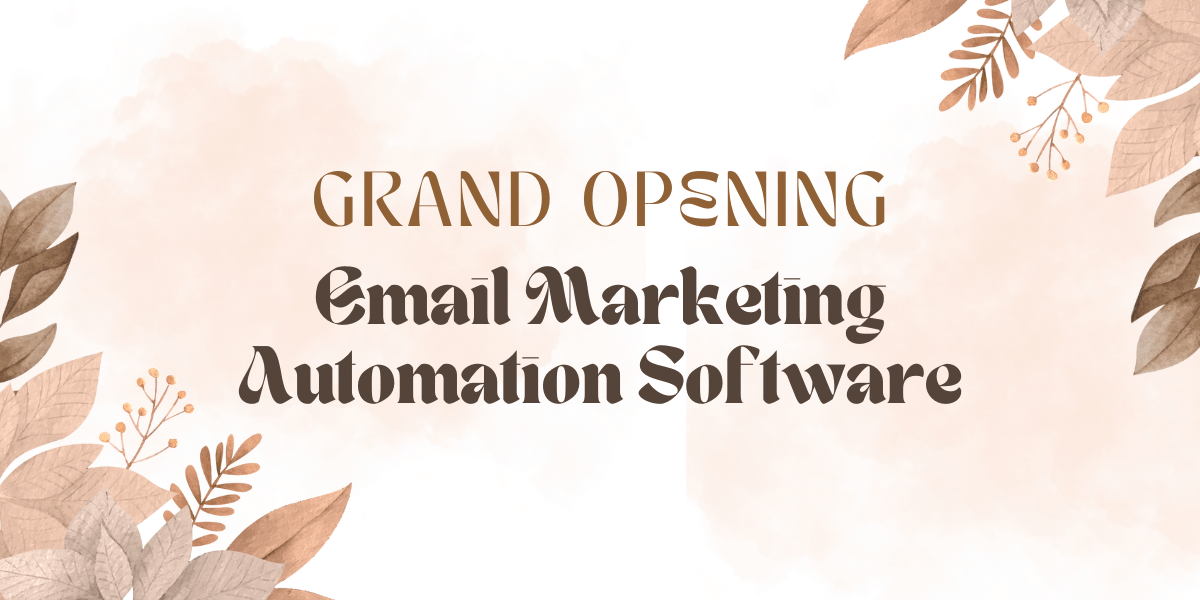Email marketing automation leverages software to send targeted, personalized emails to a list of recipients, allowing businesses to engage with their customers at the right time with the right message. This technology has revolutionized the way companies communicate with their audience, offering unprecedented opportunities for growth and customer retention.
Importance of Email Marketing Automation in Sales
In the competitive landscape of digital marketing, email marketing automation stands out as a crucial tool for driving sales. It helps businesses streamline their marketing efforts, nurture leads more effectively, and ultimately, convert more prospects into paying customers.
Objectives of the Article
This article aims to provide a comprehensive understanding of how email marketing automation software can enhance sales performance. We will explore the various types of automation software, key benefits, best practices, and future trends, supported by real-life case studies and expert insights.
Types of Email Marketing Automation Software
Basic Email Automation Tools
These are the perfect tools for startups and small businesses. They offer essential features such as autoresponders, basic segmentation, and simple analytics.
Advanced Email Automation Platforms
Designed for larger enterprises, these platforms provide advanced functionalities like multi-channel automation, complex workflows, and in-depth analytics, allowing for highly sophisticated marketing strategies.
Industry-Specific Email Automation Solutions
Some email marketing automation software is tailored to specific industries, such as e-commerce, real estate, or healthcare, offering features and templates designed to meet the unique needs of these sectors.
Benefits of Email Marketing Automation
Increased Efficiency and Productivity
By automating repetitive tasks, businesses can save time and resources, allowing their marketing teams to focus on more strategic initiatives.
Enhanced Customer Engagement
Automated emails can be timed and personalized to engage customers more effectively, fostering stronger relationships and higher engagement rates.
Improved Personalization
With the ability to segment audiences and tailor content, businesses can deliver highly relevant messages that resonate with individual recipients, leading to better responses.
Higher Conversion Rates
Personalized and timely emails can significantly boost conversion rates by providing recipients with the right information at the right time.
Better Analytics and Reporting
Automation platforms offer robust analytics tools that provide insights into campaign performance, helping businesses optimize their strategies for better results.
Key Components of Email Marketing Automation
Email Campaign Management
This involves creating and managing automated email campaigns, from welcome emails to re-engagement campaigns, ensuring that each message is delivered at the optimal time.
Customer Segmentation
Segmenting customers based on their behavior, demographics, and other criteria allows for more targeted and effective email marketing.
Drip Campaigns
Drip campaigns consist of a series of automated emails sent over a specific period, designed to nurture leads through the sales funnel.
Behavioral Triggers
Emails can be triggered by specific actions taken by the recipient, such as abandoning a cart or visiting a particular page on the website, ensuring timely and relevant communication.
A/B Testing
This feature allows marketers to test different versions of an email to see which one performs better, enabling continuous optimization of email campaigns.
Analytics and Reporting
Comprehensive analytics and reporting tools provide insights into email performance, customer behavior, and campaign ROI, helping businesses make data-driven decisions.
How Email Marketing Automation Works
Setting Up the System
The first step in implementing email marketing automation is setting up the software, which involves integrating it with your existing CRM and other tools, and configuring it to meet your business needs.
Integrating with CRM and Other Tools
Integration with CRM and other marketing tools ensures that all customer data is synchronized, allowing for more personalized and effective email campaigns.
Designing Email Campaigns
Designing visually appealing and engaging email campaigns is crucial for capturing the recipient’s attention and driving action.
Automating Workflows
Workflows are the backbone of email marketing automation. They define the sequence of actions that the software will take based on specific triggers and conditions.
Monitoring and Optimizing Campaigns
Regular monitoring and optimization are essential for ensuring the success of email campaigns. This involves analyzing performance data and making necessary adjustments to improve results.
Best Practices for Email Marketing Automation
Define Clear Goals and Objectives
Having clear goals and objectives is the foundation of any successful email marketing campaign. This helps in aligning your efforts with the desired outcomes.
Understand Your Audience
Understanding your audience’s needs, preferences, and behaviors is crucial for creating relevant and engaging content.
Create Engaging Content
High-quality content that provides value to the recipient is key to driving engagement and conversions.
Segment Your Audience
Segmentation allows you to tailor your messages to specific groups within your audience, resulting in more relevant and effective communication.
Personalize Your Emails
Personalization goes beyond addressing the recipient by name. It involves using data to tailor the content and offers to the individual recipient’s preferences and behavior.
Test and Optimize
Optimizing and testing your campaigns on a regular basis is crucial to raising their effectiveness. This includes A/B testing, analyzing results, and making necessary adjustments.
Challenges in Email Marketing Automation
Data Privacy and Compliance
Ensuring compliance with data privacy regulations, such as GDPR and CCPA, is crucial for protecting customer data and maintaining trust.
Integration with Existing Systems
Integrating email marketing automation software with existing systems, such as CRM and e-commerce platforms, can be challenging but is essential for seamless data flow and effective automation.
Maintaining Email Deliverability
Ensuring that your emails reach the recipients’ inboxes and are not marked as spam is critical for the success of your campaigns.
Managing Unsubscribes and Spam Complaints
Handling unsubscribes and spam complaints effectively is important for maintaining a healthy email list and protecting your sender reputation.
Keeping Content Fresh and Relevant
Regularly updating your email content to keep it fresh and relevant is essential for maintaining recipient engagement and interest.
Future Trends in Email Marketing Automation
AI and Machine Learning
The integration of AI and machine learning in email marketing automation is expected to enhance personalization, predict customer behavior, and optimize campaign performance.
Predictive Analytics
Predictive analytics will enable marketers to forecast outcomes and trends, allowing for more informed decision-making and strategy development.
Enhanced Personalization
Advancements in technology will enable even more sophisticated levels of personalization, ensuring that each recipient receives highly relevant and timely content.
Conclusion
Email marketing automation offers numerous benefits, including increased efficiency, enhanced customer engagement, improved personalization, higher conversion rates, and better analytics.



